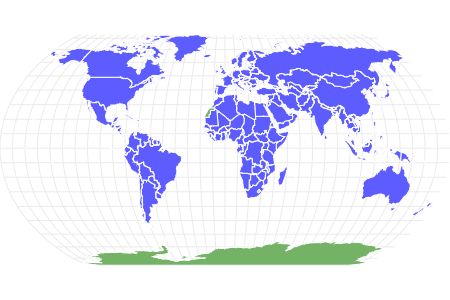Not all birds are able to fly!
Advertisement
Bird Scientific Classification
Read our Complete Guide to Classification of Animals.
Bird Conservation Status
Bird Facts
- Main Prey
- Fruit, Spiders, Insects, Seeds
- Distinctive Feature
- Light, feathered body and beak
- Wingspan
- 9cm - 300cm (4in - 118in)
- Habitat
- Forests and shrub land close to water
- Predators
- Foxes, Birds, Wild dogs
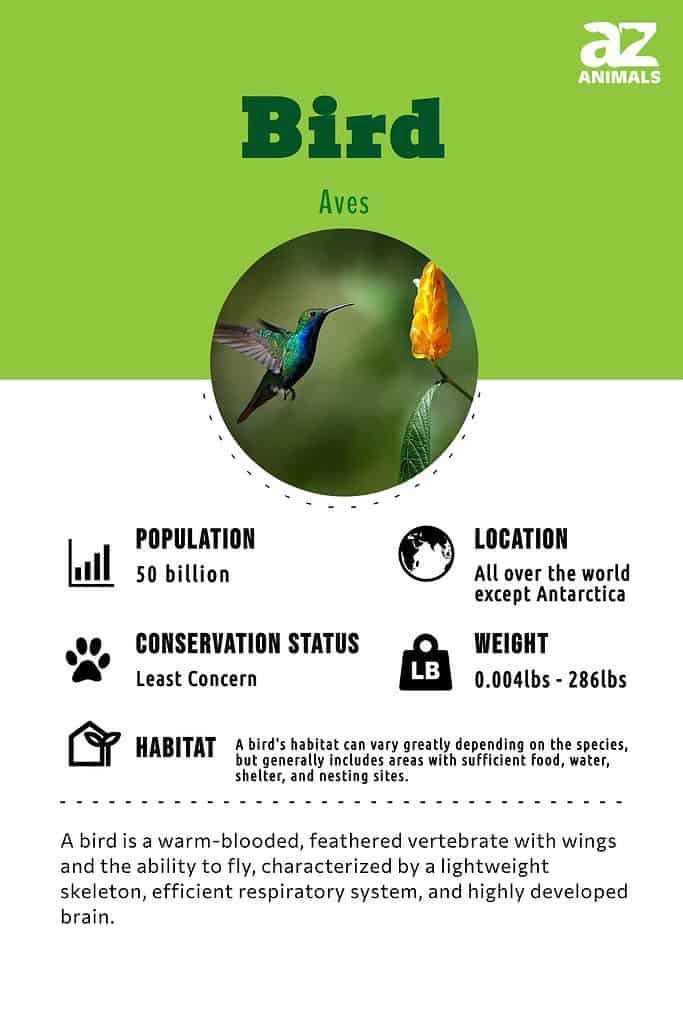
There are numerous species of birds found in a wide variety of habitats all around the world. Birds are one of the most thriving groups of animals on the planet as they generally have their habitat (the skies) to themselves.
Birds can be easily distinguished from other animals due to their sharp, pointed beaks, thin legs, wings, and feathers covering their bodies. Although all bird species have wings, some are actually flightless animals that only use their wings for balance and not for flying.
Whereas other birds, such as penguins, use their wings for swimming. Birds also have talons that they use for various purposes, including feeding and defending themselves from threats.
Birds are often omnivorous animals, generally eating nearly anything that they can find. Most species of bird survive on a diet primarily consisting of insects and plants such as fruits, nuts, berries, and seeds.
Birds are also distinctive in the fact that they lay eggs in a similar way to other animal groups such as fish and reptiles. Birds often make nests in the trees or on the ground in which to lay their eggs.
Different Types of Birds
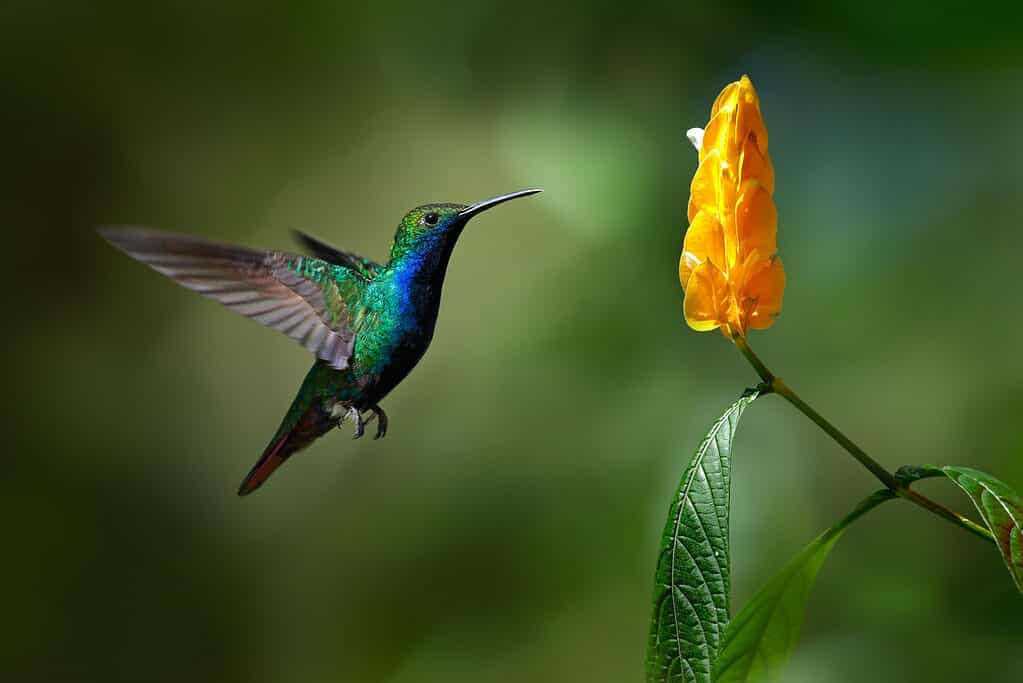
Anthracothorax viridigula, sometimes known as the green-throated mango, can be seen along a brief stretch of the Atlantic Coast to the north and south of the exit of the Amazon River.
©Ondrej Prosicky/Shutterstock.com
There are approximately 10,000 different species of birds on the planet. Birds can be categorized by their habitat, diet, and distribution among other characteristics.
The following list includes common bird species that most people are familiar with:
- Owls – There are more than 200 different species of owls throughout the world. Owls can be found in most regions of the world with the exception of the polar ice caps. Owls tend to be solitary and nocturnal birds, hunting for prey at night.
- Parrots – Parrot species, including cockatoos, are colorful birds living mostly in tropical and subtropical regions of the world. There are around 400 different species of parrots, and at least one-third are threatened by extinction.
- Finches – Finches are a type of perching bird, also known as passerine, which can be identified by their toe arrangement. Finches inhabit a wide range of habitats, and many species don’t migrate in the winter.
- Falcons – Approximately 40 different bird species make up the genus falco. Falcons are birds of prey and are well known for their vision and speed. The Peregrin falcon is currently the fastest documented bird and animal species on the planet, reaching speeds of up to almost 200 miles per hour.
- Herons – Herons are the long-legged freshwater and coastal birds that primarily eat fish and other aquatic prey. Pollution and habitat destruction have contributed to the decreasing number of herons in the wild.
- Penguins – Penguins are a flightless, aquatic group of birds that is almost exclusively found in the Southern Hemisphere. Being highly adapted to life near the water, penguins spend about half of their lives in the sea.
Additionally, here is a full list:
- Budgerigar
- Chicken
- Columbidae
- Blue jay
- Nyctibius
- Hummingbirds
- Birds-of-paradise
- Toucans
- Bluebirds
- Crows
- Atlantic canary
- Mallard
- Woodpeckers
- Common blackbird
- Passerine
- Cassowaries
- Long-tailed tit
- Common ostrich
- Indian peafowl
- Tit
- Old World sparrows
- House sparrow
- Herons
- Cranes
- Swallows
- Cuckoos
- European robin
- Kingfisher
- Emu
- Pelican
- Common kingfisher
- Cormorants
- Turkey
- Stork
- Ostriches
- Eurasian jay
- Swans
- Swifts
- Hornbill
- European goldfinch
- Eurasian magpie
- Eurasian bullfinch
- Eurasian hoopoe
- Common starling
- Common nightingale
- Albatrosses
Evolution and Origins
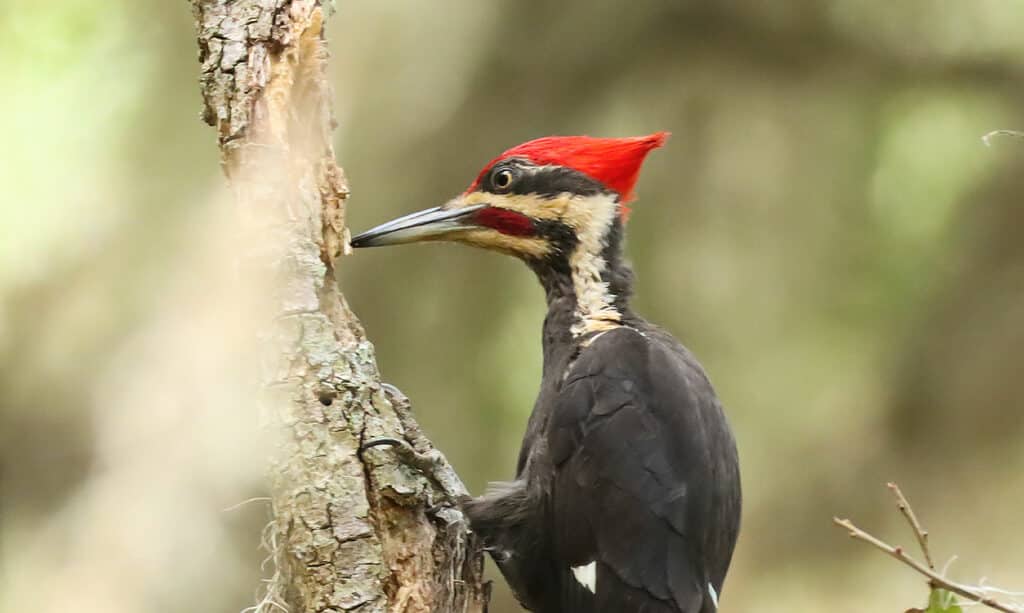
Part of the scarlet tanager’s scientific name means olive green.
©iStock.com/Wirestock
Birds are a highly diverse and successful group of vertebrates that are found on every continent except for Antarctica. They are characterized by their feathered bodies, wings, and ability to fly. The evolution and origins of birds have long been the subject of scientific investigation and debate.
The earliest known bird-like fossils date back to the Late Jurassic period, approximately 150 million years ago. These early birds, such as Archaeopteryx, had a combination of both bird and reptile characteristics. They had feathers and a wishbone, which are unique to birds, but also possessed teeth and a long, bony tail, which are typical of reptiles.
The exact evolutionary relationship between birds and reptiles has been the subject of much debate among scientists. Some researchers have suggested that birds evolved from small, feathered dinosaurs, while others have proposed that birds evolved from a separate line of reptiles. The discovery of the early bird-like fossils has provided strong evidence for the dinosaur origin theory.
One of the key adaptations that allowed birds to evolve into the successful and diverse group they are today was the development of flight. Birds’ lightweight skeletons, powerful muscles, and specially adapted feathers allowed them to take to the air and escape from predators and access new food sources. Over time, birds evolved specialized beaks, feet, and wings for different lifestyles, such as diving for fish or cracking open seeds.
Diet
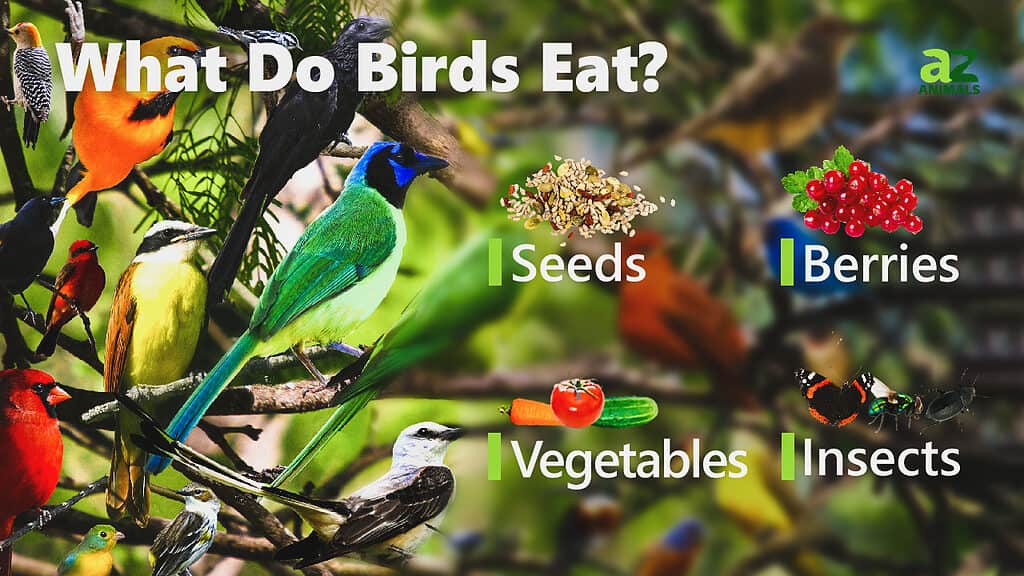
The diet of birds can vary greatly depending on the species, habitat, and availability of food. However, most birds feed on a variety of items such as seeds, fruits, insects, small vertebrates, and nectar.
Here is a list of things birds eat:
- Seed-eating birds, such as sparrows, finches, and doves, make up the largest group of birds and feed primarily on seeds from plants. They also supplement their diet with small insects, berries, and other fruits.
- Fruit-eating birds, such as parrots and toucans, feed on the fleshy part of fruits and berries. They are also known to eat seeds and insects as part of their diet.
- Insect-eating birds, such as flycatchers and woodpeckers, feed primarily on insects, spiders, and other small invertebrates. Some species, such as the Baltimore Oriole, also feed on nectar from flowers.
- Carnivorous birds, such as hawks, owls, and eagles, feed on small mammals, reptiles, and other birds. They are known for their keen eyesight and powerful talons that allow them to catch their prey.
- Omnivorous birds, such as crows and jays, have a diverse diet that includes both plant and animal matter. They feed on a variety of items including insects, seeds, fruits, small mammals, and eggs.
It is important to note that the availability of food can vary greatly depending on the season and habitat, so birds often adapt their diet accordingly. Additionally, some birds have specialized diets, such as the Hummingbird, which feeds almost exclusively on nectar.
Finally, the average diet of birds is diverse and varied, depending on the species, habitat, and availability of food. From seeds and fruits to insects and small vertebrates, birds have evolved a variety of feeding strategies to ensure their survival in different environments.
What is the Average Lifespan of Birds?
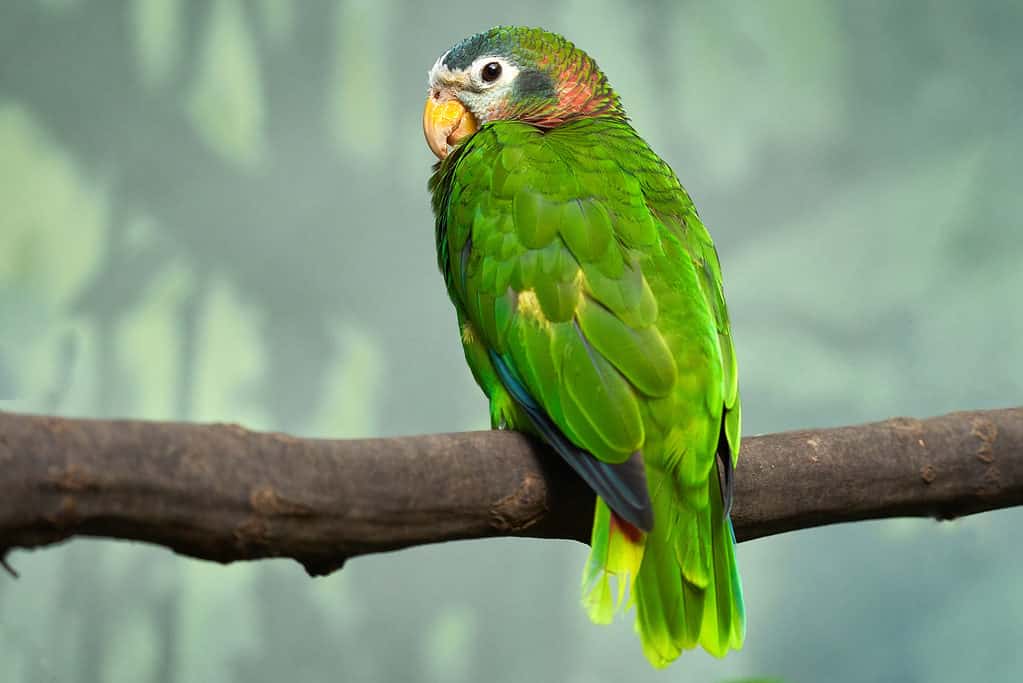
The yellow-billed parrot is one of the many feathered residents of Jamaica. The average lifespan of birds varies greatly depending on the species, with some living just a few years while others can live for several decades.
©Ondrej Prosicky/Shutterstock.com
The lifespan of birds can vary greatly depending on the species, with some living just a few years while others can live for several decades. On average, small bird species have a shorter lifespan compared to larger birds.
For example, small birds such as the Ruby-throated Hummingbird have a lifespan of just 3-5 years, while larger birds such as the Bald Eagle can live up to 20-30 years in the wild.
The lifespan of birds can also be affected by a number of factors, including habitat, diet, and exposure to predators and disease. Birds that live in captive environments, such as zoos or aviaries, often have a longer lifespan compared to their wild counterparts due to better living conditions and access to veterinary care.
In addition to species and habitat, the average lifespan of birds can also be influenced by genetics. Some bird species have longer lifespans due to genetic adaptations that help protect against disease and oxidative stress.
Furthermore, the average lifespan of birds can vary greatly depending on the species, habitat, and other factors such as genetics and exposure to predators and disease. While some bird species have short lifespans, others can live for several decades, making them a valuable part of our natural world.
Reproduction Cycles
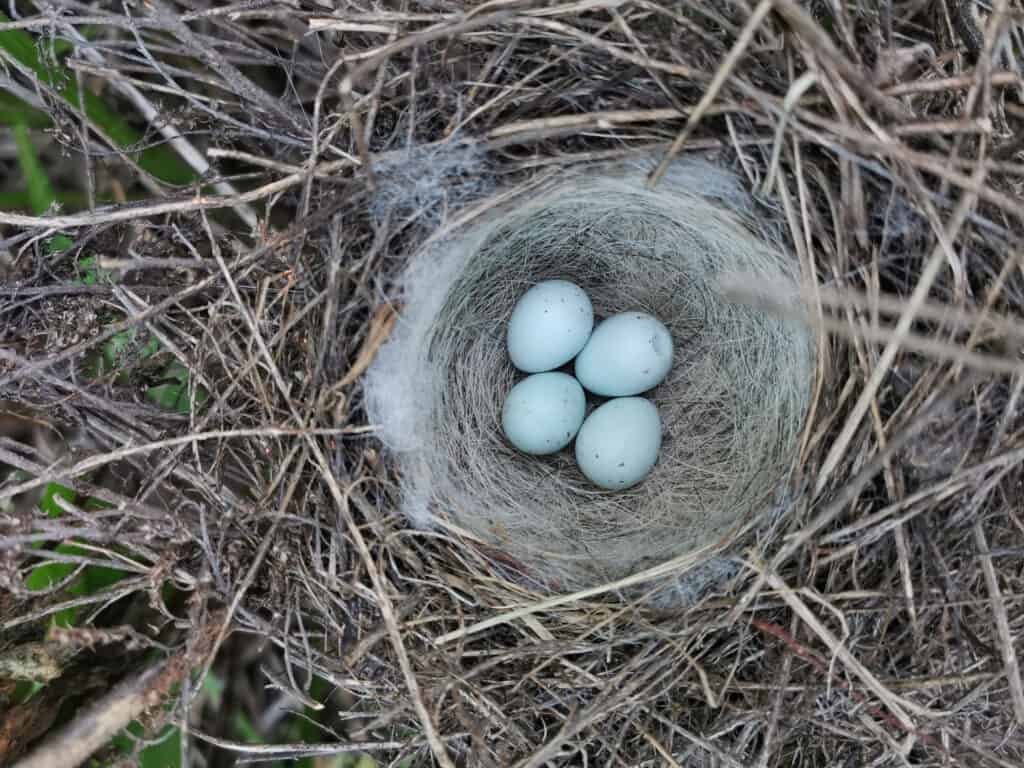
Linnet’s lay between 4 and 6 light blue eggs with dark streaking and spots. Some bird species are capable of migration, traveling thousands of miles between their breeding and wintering grounds.
©Olga Alyonkina/Shutterstock.com
The reproduction cycle of birds is a complex process that involves a variety of behaviors and physiological changes. Most birds mate for life and form strong bonds with their partners, often engaging in courtship displays and vocalizations to attract a mate.
The breeding season for birds typically occurs during spring and summer, when food is abundant and the weather is favorable for raising young. During this time, females lay eggs and incubate them until they hatch. The number of eggs laid can vary greatly depending on the species, with some birds laying just one or two eggs while others lay up to a dozen or more.
The incubation period for bird eggs is typically 10-20 days, during which the female bird sits on the eggs to keep them warm and protected. Once the eggs hatch, the male and female birds work together to feed and care for the young.
After the young birds have fledged and become independent, the parents may breed again in the same season or wait until the following year. Some bird species, such as pigeons and doves, are capable of producing multiple broods in a single season.
Lastly, the reproduction cycle of birds is a complex process that involves a variety of behaviors and physiological changes. From courtship and egg-laying to incubation and care of young, birds have evolved a variety of strategies to ensure the survival and success of their offspring.
More Articles Related to Birds
Check out some of this other great content about birds:
Read about:
View all 285 animals that start with BBird FAQs (Frequently Asked Questions)
Are Birds herbivores, carnivores, or omnivores?
Birds are Omnivores, meaning they eat both plants and other animals.
What Kingdom do Birds belong to?
Birds belong to the Kingdom Animalia.
What phylum do Birds belong to?
Birds belong to the phylum Chordata.
What class do Birds belong to?
Birds belong to the class Aves.
What type of covering do Birds have?
Birds are covered in Feathers.
In what type of habitat do Birds live?
Birds live in forests and shrub land close to water.
What is the main prey for Birds?
Birds prey on fruit, spiders, insects, and seeds.
What are some predators of Birds?
Predators of birds include foxes, birds, and wild dogs.
What are some distinguishing features of Birds?
Birds have light, feathered bodies and beaks.
What is the average clutch size of a Bird?
Birds typically lay 5 eggs.
What is an interesting fact about Birds?
Not all birds are able to fly!
How to say Bird in ...
Thank you for reading! Have some feedback for us? Contact the AZ Animals editorial team.
Sources
- David Burnie, Dorling Kindersley (2011) Animal, The Definitive Visual Guide To The World's Wildlife
- Tom Jackson, Lorenz Books (2007) The World Encyclopedia Of Animals
- David Burnie, Kingfisher (2011) The Kingfisher Animal Encyclopedia
- Richard Mackay, University of California Press (2009) The Atlas Of Endangered Species
- David Burnie, Dorling Kindersley (2008) Illustrated Encyclopedia Of Animals
- Dorling Kindersley (2006) Dorling Kindersley Encyclopedia Of Animals
- Christopher Perrins, Oxford University Press (2009) The Encyclopedia Of Birds

